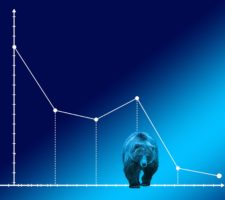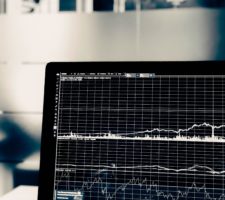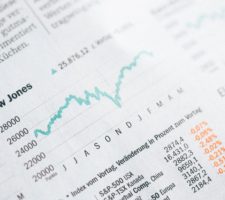Forex trading is a tricky area that requires you to understand many concepts before you start trading profitably. If you are new to it, you will come across several terms, and it is essential to familiarize yourself with them. This way, learning becomes easier since these terms are what will be used to explain the general concept behind forex trading. Two common terms in the forex trading field are leverage vs margin. They are related in some way, and this piece will explain all you need to know about them.
What Does Leverage Mean In Forex?

One of the most common sayings in the forex trading field says, “leverage is a two-edged sword!” This statement is true, and the quicker you let it sink in, the better it is for you.
It is a no brainer that forex trading is a risky venture, and to avoid losing money, prudent traders enforce various risk management strategies.
According to Investopedia, leverage is regarded as the ability to control a huge amount of money using very little of your own money.
To put it into perspective, your investment broker will ask you to deposit some amount to your account, referred to as margin, and then choose a certain amount of leverage that determines the amount they will loan you.
How Does Forex Leverage Work?
From the definition, it is evident that the role of leverage is to increase the amount of money you can trade. This way, you get to deposit a small amount and then trade with a big amount.
To explain how this works in the market, let us use an example. Assume that you want to control a $100,000 position in the market.
Your broker decides to set aside $1000 from your account, and leverage, usually illustrated in the form of ratios, is now at 100:1. Now you are controlling $100,000 with only $1000.
Let us assume that you trade the amount, and the investment value rises to $101,000. Here, you gain $1000, which is 100% without having to come up with the entire amount.
Now assume you had lost the $1000. This is where the double-edged sword saying comes into the picture, as you would have lost 100% of your amount.
What Is Margin?
To explain what margin is, we will refer to the example mentioned above. For that scenario, your broker put aside $1000 for you to control a $100,000 position.
This is called 100:1 leverage. The $1000 deposit you are required to place is the margin you need to give to trigger the leverage.
In simple terms, it is some form of deposit given to a broker to open your position with them. Brokers take your margin deposit and pools it with several others to create a considerable margin pool.
It is often represented as a percentage of the full position amount, and brokers specify this, for instance, 1%, 2.5%, or 0.5% margin.
Depending on your broker’s leverage vs margin specifications, you can determine the maximum amount you can wield on your account.
What Is Free Margin?
There are two types of margin; used or free. The used margin is a sum of all the required margin from open positions.
Note that this sum includes both positive and negative figures.
Free margin is the difference between used margin and equity. It refers to the capital in your account that is not tied up in active open positions.
In layman terms, it is the free amount in your account that can be used for free trades.
How Can You Calculate Forex Margin Level?
The margin level is the percentage value based on the equity versus used margin. It helps you to get an idea of the amount of money you have for new trades.
The higher this level, the freer margin available for your trade.
Note that if the margin level goes too low, it can lead to a margin call or a stop out which is not very good.
The formula for calculating margin level is equity divide by used margin expressed as a percentage.
Most trading platforms will automatically show the margin level on your dashboard. If you do not have an active trade, it will be at zero.
This percentage is crucial since brokers use it to know whether you can open any more trading positions. Brokers will set their limits, but most will have it at 100%.
This implies that if your equity is less than or equal to your used margin, you cannot open any new position.
Leverage vs Margin; The Bottomline
You might be wondering why leverage vs margin is essential in the forex trading field. Well, they are useful for beginners and offer an attractive tool for any investor who is looking to maximize their gains.
Most people do not have a lot of money to start investing with, and these tools allow them to play around with large amounts with small deposits in their accounts.
However, note that it is not always this straightforward in the forex trading field, and leverage can easily backfire. For the same potential of gaining huge amounts in the market, there is a risk of losing the same amount.
Some of these losses, coupled with interests and other associated costs, can lead to huge losses since the broker expects you to give them their money back plus the agreed interests.
This way, it is necessary for traders to come up with smart investing strategies coupled with risk management schemes such as top orders to put a cap on the amount of money you can lose.
It is paramount to understand the bigger picture surrounding leverage and margin rather than investing blindly.
They might seem attractive from the outside, but all seasoned forex traders will tell you that all that glitters is not gold in this area.
The best way is to trade low and slow while avoiding being swayed by the potential of huge returns as it can render you with no capital real quick.


